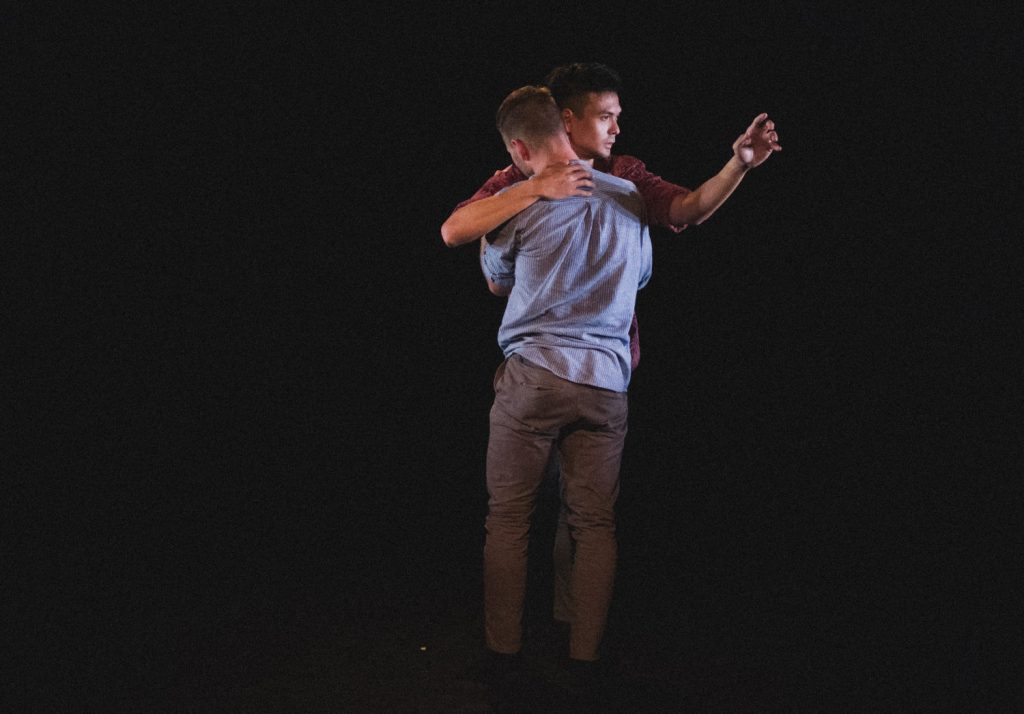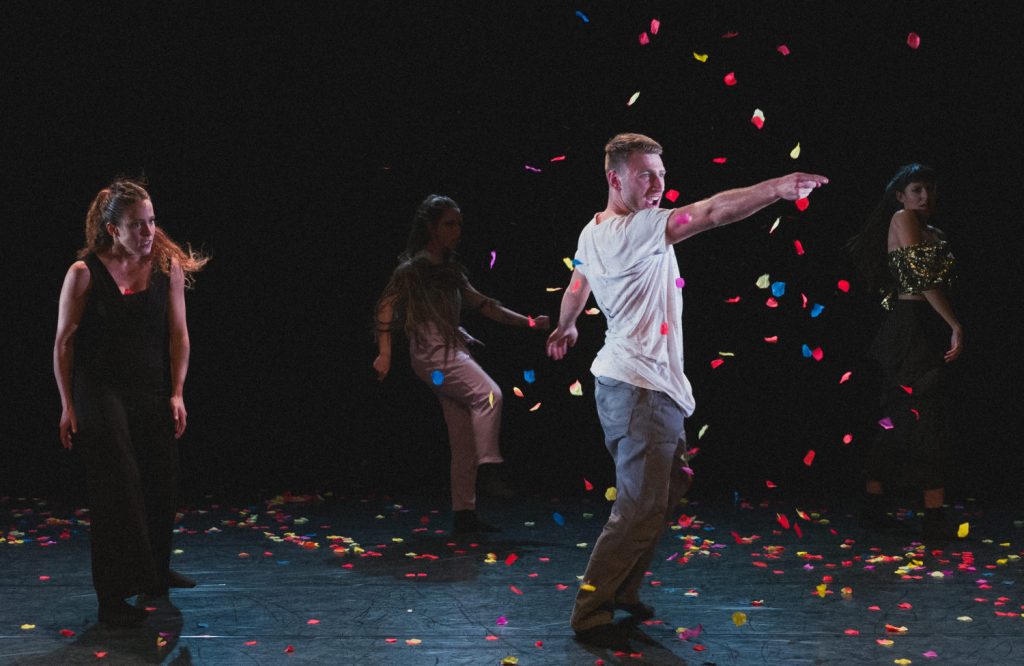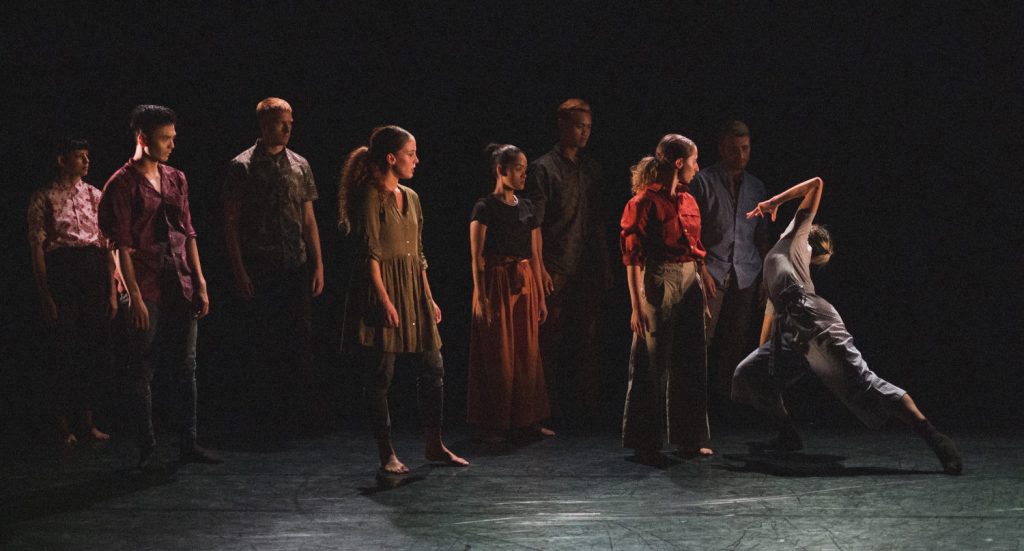- Views3956
- Likes0
Mix Bill
Möbius Dance & Kenny Shim Collective
2-4 August 2019
Damansara Performing Arts Centre
Review by Bilqis Hijjas
Coming home from overseas with an illustrious dance degree is no guarantee of local success. To continue your career in Malaysia, not only do you need to have artistic talent, you must also be a diligent producer, tireless networker and shameless self-promoter, while committing to the daily dance practice that keeps your body and mind in shape. Oh, and you need deep pockets, too — because none of that dance work will make you enough money to survive. Generations of starry-eyed Malaysian graduates have learned these lessons the hard way. Some go back overseas. Others end up in a local dance teaching job, overqualified and underpaid. Most eventually turn aside from dance to earn a living elsewhere. A lucky few — and luck is no small part of this equation — manage to combine skill and talent and privilege to carve out a little foothold in the scene.
Kenny Shim returned from Trinity Laban and London Contemporary Dance School in 2017. With the security of a plum job teaching dance at Mont’Kiara International School, he has his summers free to pursue a professional career. Mix Bill is his second production, following Triple Bill of Contemporary Dance Works in 2018. This year, he has sensibly decided to focus his choreographic effort on just one new work, ‘Shades of Shadow’, and to leave the heavy lifting to his collaborators, notably Gianluca Vincentini and his company Möbius Dance from Leeds, UK.
‘Shades of Shadow’ opens the show, with dim lighting revealing five dancers on stools on one side of the stage, and an ensemble of musicians on the other. Live music is always a treat for dance, even more so with the bright young talents assembled by composer Shaun Chen (most of whom are also overseas returnees). Thoughtful keyboard chords set a soft backdrop for violin and skittering cello, (and the occasional inexplicable intrusion of electronic mixed soundscape) growing heavier and more sinister as the work progresses.
Kenny expresses a dislike for allowing music to dictate the form of a dance work, so while the dance and music sometimes intersect serendipitously, the music meanders largely independent of the movement. The five dancers in black — the men bare chested, the women bare legged — begin with small repeated hand gestures: both palms pressed to the right hip bone, or one arm reaching back and the other hand cupping the armpit. The gestures recur, as the dancers divide and recombine in shifting solos and duets. The movement is the standard collapsed technique of contemporary ballet, privileging the pointed foot and the extended leg amid off-kilter convolutions, and the dancers progress through it with cool and economical grace.
Tall redheaded Alistair Wroe, slightly menacing in the backlight, is contrasted with the slight figure of Lee Jia Xi. Their pregnant looks develop into a series of entangled lifts, and end with Alistair repeating his gesture of arms extended, wrists crossed, and hands cupped inwards — but this time with this hands around Jia Xi’s neck. He glowers as Jia Xi dances later with Will Lim Hui Huang, but Jia Xi, with her little cat face and impeccable technique, remains perfectly unattainable. On the whole, the work is somewhat cold by local standards, but it functions as a palate cleanser from the melodrama of much Malaysian dance. Even Will Lim, a rather more histrionic presence in Kenny’s work last year, looks discreet and understated in this dance.
Lim Pei Ern begins the work uncharacteristically demure, but perhaps her personality can’t be totally subsumed to the demands of choreography. Her slightly hitched shoulders and flexible upper back lend her a vulnerability; the moment when she curls into herself, alone on the floor with the other dancers standing around her, produces a hiccup of emotion in the midst of the polished elegance.
Möbius Dance takes over the middle of the show, with Douglas Thorpe’s bumptious ‘Dramatis Personae’. The four dancers (Stefania, Charlie, Iolanda, Ana — apparently, like Cher, they have only one name) play zany characters dressed by a vintage clothing store, having a grand night out. No queasiness about music dictating the movement here — beginning with Verdi’s Rigoletto (ta-ra-ra-BOOM-de-ay!) and ending with wailing Radiohead, emotions are on full volume, as the characters flirt with and spurn each other and the audience. Poser guy needs to fix his hair, glamour girl wants to be a puppetmaster, someone’s had a bit too much to drink and her friend not-so-secretly despises her…
At some points watching these beautiful young white people cavorting with each other felt a little anthropological. I wondered what the be-tudunged JKKN matrons sitting in front of me were thinking! But a central sexy-fighty duet between Charlie and Ana avoids the winking irony of the rest of the work: enormous lifts require real trust that cannot be summoned by irony alone, and Charlie’s kiss-and-move-on machismo is familiar to any culture. Plus the full-group rock-out at the end, bursts of confetti springing from surprising places, is satisfyingly cathartic.
‘Human’, the final work in the show, was arranged by Gianluca Vincentini for a combination of his own dancers and Kenny’s, in little more than a week before the show. At first glance, it promises to rehash some of the material of Kenny’s work: meaningful stares, shifting partner combinations, the fickleness of human relationships. But it quickly develops into something more optimistic. An early weight-sinking duet between Ana and Pei Ern generates supportive warmth, ending with them lean-sitting on each other, back and forth. Alistair and Stefania share a tender duet to the swooping melancholy music of Caetano Veloso. And a single moment towards the end, when Alistair removes Stefania’s headphones and she realises that everyone can hear the music she dances to, leaves us with an aching sweetness.
The most interesting coupling happens in the middle of the work, between Kenny and Charlie. At first they are separated from each other — Kenny in a duet with a woman, Charlie in a trio — and the glances they share across the space thrum with dangerous possibility. They finally get together with a coy non-touching hand duet, as the other dancers vacate the stage, giving them a little privacy. While the sexual tension ebbs somewhat in the following duet, it surges back when Charlie impulsively hugs Kenny, and Kenny looks taken aback, even dismayed, by the directness of the human contact.
Having supportive partners, on-stage and off, is the final crucial key to having a dance career. Kenny Shim seems to have found fruitful synergy with Möbius Dance, the featured musicians, and the dancers in his own collective, especially Lee Jia Xi. She is also a returnee from overseas, from dance training in New Zealand, and Kenny uses her talent and ability in a way that both challenges her and makes her look gorgeous. He would do well to keep these connections going. Conjuring the alchemy that produces a successful and long-lived career may seem almost impossible — but everything is easier with friends.
All photos by Wesley Murang Jon, courtesy of Kenny Shim.
Bilqis Hijjas is the founding editor of Critics Republic. A producer, lecturer and community organizer in contemporary dance, she believes the main purpose of criticism is to enhance the audience’s appreciation of art.



